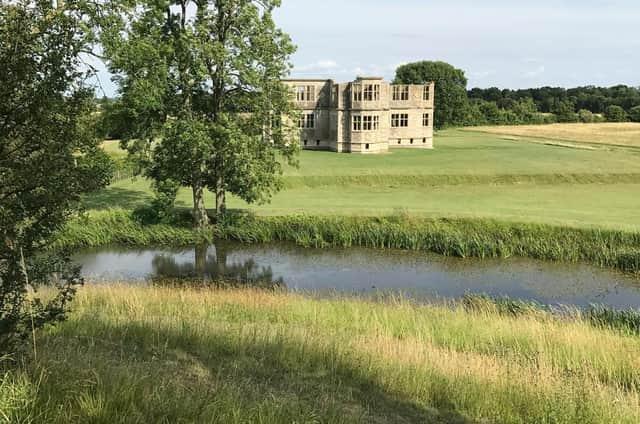DAVID SAINT COLUMN: Northamptonshire blessed with beautiful gardens


The first star name is André Le Nôtre, who lived from 1613 to 1700.
Notable examples of his designs are Versailles, Chatsworth and Wrest in Bedfordshire. He worked on a grand scale and we are lucky enough to have remnants of his work at Althorp and especially Boughton House.
Advertisement
Hide AdAdvertisement
Hide AdAt about the same time, John Van Nost was also working. He was, without doubt, the greatest maker of garden ornaments of the early 18th century.
In the Green Court at Canons Ashby House, his statue of a fluting shepherd boy, and the cartouche over the west door, are stunning.
The gardens were originally laid out by George London and Henry Wise in 1708.
They were two of the most important English garden designers of their time, creating an English Baroque style.
Advertisement
Hide AdAdvertisement
Hide AdThe original designs were a great influence on other designers, such as Gertrude Jekyll and Edwin Lutyens.
I suppose most people have heard of Lancelot ‘Capability’ Brown. He was no stranger to Northamptonshire and became head gardener to the Duke of Grafton.
The duke lived at Euston Hall, Suffolk, and at Wakefield Lodge, near Towcester, where, in 1750, ‘Capability’ laid out the park.
The house was designed by William Kent with whom Brown had worked at Stowe, five miles away.
Advertisement
Hide AdAdvertisement
Hide Ad‘Capability’ also landscaped Astrop, Aynhoe and Castle Ashby here in the county.
His signature lake, bridge, graceful trees, temples and other ‘folly’ buildings can still be seen at Castle Ashby. I saw them from the air on a sample helicopter lesson! Fabulous!
Hot on the heels of Brown came Humphrey Repton (1752-1818). In fact, not only was he the next major name in garden design, but he also took Brown’s job as head gardener at Hampton Court.
Even though Brown had created his vast visions of rural England, it was Repton who was the first to be called a landscape gardener.
Advertisement
Hide AdAdvertisement
Hide AdOn occasional ‘open days’, you can see his work at Courteenhall and Laxton Hall, both private houses.
I believe there is a public right of way called the Midshires Way from Harlestone Post Office to Lower Harlestone. Anyway, I walked it and saw what is left of Repton’s wonderful landscaping for Harlestone Hall, which was demolished in 1940.
No one stopped me on my walk. Perhaps I looked important!
I wonder exactly who designed the gardens at Lyveden New Bield, cared for by The National Trust.
They were started by Sir Thomas Tresham in 1595, but how much influence he had on them remains unknown.
Advertisement
Hide AdAdvertisement
Hide AdThey are a rare and truly magnificent example of Elizabethan landscape design with water gardens, terraces, canals and what I call snail path hills.
An orchard recreates rare varieties of the time and the whole is, of course, crowned by the unfinished Garden House covered in religious symbols.
One of the many true gems of Northamptonshire.